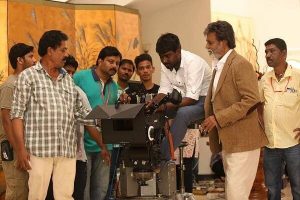What is very important to make a movie successful? The script, the actors, the editing, cinematography, production, direction, music, animation……….can we really pinpoint on one of the elements? When considering the most important elements in a successful film, it is practically impossible to separate the actors from the script, to consider the screenwriter more important than the actors or to minimize the role of the director is absurd. The making of a movie is a creative process, reducing any of the processes diminishes the product and thwarts its existence. From a commercial angle, the producer and the financers are most important; because without them, the movie wouldn’t be rolled out.
India is one of the few countries in the world where Hollywood doesn’t reign supremacy. This is because India has many regional film industries besides its main industry Bollywood. Indian viewers demand movies with Indian sensibilities and cultural intricacies. The regional film industries are coming into increasing focus for a number of reasons: the Marathi and Malayalam film industries have been going through a revolution of sorts in recent years regarding the quality content and kinds of movies being made. They are gradually getting national and international recognitions. What is worth noting is regional films are known for their smaller budgets and are less frenzied about their star culture. I think this allows filmmakers to put the content and story at the center of the films and experiment with different kinds of movies.
The best example is 2016 blockbuster Marathi film ‘Sairat.’ It is the highest grossing Marathi movie ever. Based on a very sensitive matter of casteism, the story is based on innocent love affair. The movie has two new faces, no leading actors are roped in the movie, shot at simple locations. The movie emerged a strong winner in 2016, becoming the first in regional language to cross Rs 100 crore in box office collections. The revenue model was designed to link performance of the film to the remuneration of talent. Though this practice is increasingly adopted by Bollywood but was never heard of in regional cinema.
In 2015, Rajinikath-starrer Kabali, Bengali romantic film Praktan, Telugu film A Aa and Punjabi movie Sardaarji 2 are some names which have a big share in growing the share of regional films at the Indian box office from 15 per cent to 20 per cent. The movie content is credited as the main reason. It is also because regional cinema caters to the audience’s more immediate cultures, given that we are a nation rich in regional heritage with so many cultures and languages coexisting. Regional cinema has started witnessing prosperity significantly pan-India. It’s worth noting that movie like Sardar Gabbar Singh, Sairat, Kabali are given a huge release platform outside of the regional market and foreign markets.
Another interesting fact is that, while the regional film industry has been flourishing, big production houses, which have been investing in Bollywood films, seem to have taken an interest in regional films too. Eros, Viacom 18 and Zee are some names who are looking at good regional content. It is also a good sign that corporate houses are entering the film industry.
2016 saw some of the best Bollywood movies: Pink starring Amitabh Bachchan and some new faces, directed by Aniruddha Roy Chowdhury, the film is a slap in the face of those who question the way modern women choose to live and dress. This movie’s greatest strength is its strong stand against gender inequality and sexual violence.
Akshay Kumar-starrer Airlift was inspired by the heroic tale of an Indian businessman who helped rescue around 170,000 of his compatriots in the face of looming war crisis in the Middle East. And, Shah Rukh Khan-starrer Dear Zindagi is a story of a young girl who changes her perception about life after meeting a therapist. Movie Dear Zindagi takes viewers on a joyous tour of soul-searching.
Aamir Khan’s Christmas release ‘Dangal’ made a roaring profit at the box-office with collections of Rs 155.53 crore after a five-day run. It’s a biopic on Indian wrestler and Coach Mahavir Singh Phogat, ‘Dangal’ had opened with an astounding figure of over Rs 25 crore and made its way into the prestigious Rs 100-crore club within the first weekend. What’s interesting is that even if we take the film’s five-day collections into consideration, it is already the biggest hit of the year. The film again revolves around female protagonists.
After content, budgeting has been another factor in guaranteeing growth. Movies making is drastically changing. Of late, we see that both Bollywood and regional movie business is not particularly star-driven. This means the talent cost is fairly rationalized. Secondly, the newcomers give their best, they don’t throw tantrums. One doesn’t need the world’s greatest line producer; a good script, some unknown actors, no flashy location, you can make a good film in a small budget.
The business model of movie making business is technologically driven, both pre-production and post-production. The impact of technology is in new cameras that allow cinematographers to shoot in a higher definition, letting viewers take in more of the amazing work in set design. Shooting in digital is much easier because you can do more in less time. Multiple cameras can run on the same shot, so you always get the angle you want without having to waste time on retakes.
The process of distributing film also has gone digital. Distribution through YouTube has been the most common form of marketing for quite some time. Studios have released big-budget trailers. This has made the method for film to outlive its usefulness. Digital films can be stored on company servers, without taking up too much space. The costs to maintain this infrastructure are also lower than the costs to store and re-master film.
Going digital largely means foregoing the large containers of film that used to be synonymous with film making. It also means production companies complete their shoot schedules with less waste, keeping the entire project under or close to budget. Adding visual effects to film was often a precise art, where the effect had to blend seamlessly with what was being shot. This was a painstaking process that editors no longer go through. Digital effects are created and added to the shot, this software also allows editors to work on entire sections of a film, easily piecing scenes together after the post production effects are added in. That includes audio, which now has a high definition digital file that ensures the audience will hear every word and action that they see.
The number of technology-based jobs has increased. The post-production jobs are easier to offshore and move overseas than on-set roles. Yes technical jobs in the movie making are on rise: automated dialogue editors, aerial camera assistants, aerial photographers, lighting technicians, archivers, sound recording, art department assistants, armourers – there are few more.
One factor needs a special mention here. That is Luck. To release a movie at the right place, right time, with the right promotion requires luck factor with it. A lot of famous actors, directors and producers believe in taking help of astrologers for seeking the right time to release their films. Success in the film industry is heavily dependent on luck. We cannot reduce importance of actor’s, director’s talent, dedication and hard work, but it is pretty obvious that those things are not enough on their own. There are number of extremely hard-working, talented people out there, who are yet to get the recognition they deserve.
















































